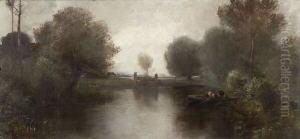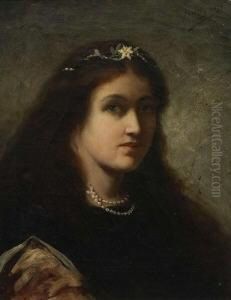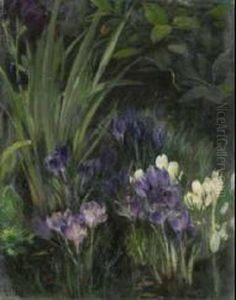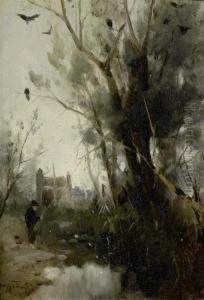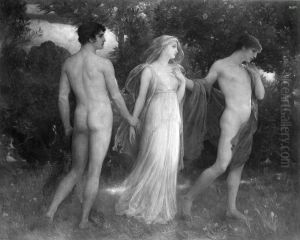Ludwig Von Lofftz Paintings
Ludwig von Löfftz was a German painter, born on January 21, 1845, in Darmstadt, Germany. He showed an early interest in art and pursued his education in painting initially at the Academy of Fine Arts, Munich. Löfftz was a student of Karl Theodor von Piloty, a prominent history painter and a strong influence on Löfftz's own style. Under Piloty's mentorship, he learned the principles of meticulous historical accuracy combined with a dramatic presentation in his works.
Löfftz's career progressed as he became known for his historical and religious paintings. His works were characterized by their realism and attention to detail, reflecting the 19th-century academic art traditions. He was particularly adept at chiaroscuro – the treatment of light and shadow – and this became a hallmark of his style.
In 1880, Löfftz moved into a teaching role at the Munich Academy and became a professor there in 1886. His influence extended through his academic position, where he taught and mentored a new generation of artists. Among his students were notable painters such as Franz von Stuck and Wilhelm Trübner, who went on to become significant figures in their own right.
Ludwig von Löfftz's reputation as an artist was accompanied by his administrative prowess. In 1891, he succeeded Wilhelm von Diez as the director of the Munich Academy, a position that he held until his death. During his tenure, the Academy flourished and became an influential art institution in Europe. Löfftz advocated for the importance of drawing as a foundation for artistic education and maintained a conservative stance on art, which sometimes put him at odds with the avant-garde movements of the time, such as Impressionism and later, the Secessionists.
Throughout his career, Löfftz remained committed to the academic style of painting, and his works were frequently exhibited in Germany and abroad. His paintings often depicted scenes from mythology, literature, and Christian iconography, rendered with a technical precision that was admired by his contemporaries.
Ludwig von Löfftz died on December 3, 1910, in Munich, having made a lasting impact on the German art scene. His legacy is reflected in the careers of his students and in the continued reverence for traditional academic painting techniques in the early 20th century.
